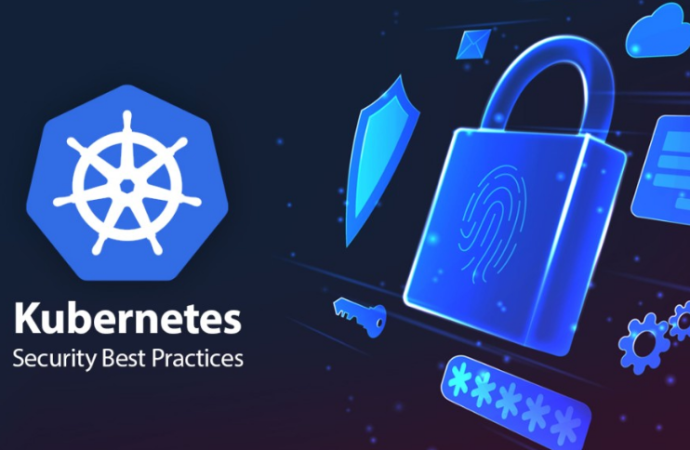Future-Proofing Kubernetes: Protection Strategies for 2024 Introduction Welcome to an insightful journey with Fred Wilson, a seasoned IT manager with over a decade of experience in IT. Fred has been at the forefront of numerous organizations, guiding them to implement and optimize their use of Kubernetes. Today, he shares his valuable insights. Understanding the Evolution
Future-Proofing Kubernetes: Protection Strategies for 2024
Introduction
Welcome to an insightful journey with Fred Wilson, a seasoned IT manager with over a decade of experience in IT. Fred has been at the forefront of numerous organizations, guiding them to implement and optimize their use of Kubernetes. Today, he shares his valuable insights.
Understanding the Evolution of Kubernetes
Since its inception in 2014 by Google, has revolutionized the way we manage and orchestrate containers. It has evolved from a simple container orchestration tool to a comprehensive platform that manages complex, multi-container architectures. Understanding this evolution is crucial to appreciate the need for future-proofing Kubernetes. The journey from monolithic architectures to microservices, and the role it has played in this transition, is a testament to its impact and the need for its protection.
The Importance of Future-Proofing Kubernetes
As it continues to evolve, so do the challenges associated with managing it. Future-proofing Kubernetes is not just about anticipating these challenges, but also about preparing your organization to adapt and thrive in an ever-changing technological landscape. With the increasing adoption of Kubernetes, the stakes are higher than ever. A single vulnerability can lead to significant downtime or, worse, a security breach. Hence, future-proofing it is no longer a luxury but a necessity.
Key Strategies for Protecting Kubernetes in 2024
There are several strategies that can help protect your Kubernetes deployments:
- Regular Updates and Patches: Keeping your Kubernetes deployment up-to-date is the first line of defense against potential threats. Regular updates and patches not only provide new features but also fix security vulnerabilities. It’s important to have a robust update strategy that includes regular checks for updates, thorough testing, and timely application of patches.
- Robust Access Controls: Implementing robust access controls can prevent unauthorized access to your it’s clusters. This includes using Role-Based Access Control (RBAC) and limiting the use of privileged containers. RBAC allows you to specify who can do what within a cluster, providing a granular level of control. Limiting the use of privileged containers reduces the potential attack surface.
- Network Policies: Network policies allow you to control the traffic flow between pods in a Kubernetes cluster. They can be used to isolate applications and limit the potential impact of an attack. By default, pods in a Kubernetes cluster can communicate with each other. Network policies allow you to restrict this communication, providing an additional layer of protection.

Picture by: https://medium.com/@gyanjavascript/kubernetes-security-best-practices-f81ebf76b849
Case Study: Successful Kubernetes Protection Strategies
Let’s look at a case study of a company that successfully implemented these Kubernetes protection strategies. The company, a leading e-commerce platform, was able to significantly reduce the risk of security breaches and ensure the smooth operation of their deployments. They achieved this by implementing a robust update strategy, enforcing strict access controls, and using network policies to isolate their applications. This case study serves as a blueprint for other organizations looking to protect their deployments.
How IT Managers and Developers Can Implement These Strategies
Implementing these strategies requires a concerted effort from both IT managers and developers. IT managers need to ensure that the necessary policies and procedures are in place, while developers need to follow best practices when deploying applications on it. For example, IT managers can enforce the use of RBAC and network policies, while developers can ensure that they are using non-privileged containers wherever possible.
Predictions for Kubernetes in 2024 and Beyond
Looking ahead, it is likely to continue its dominance in the container orchestration space. However, as the technology evolves, so will the strategies for protecting it. Staying informed and being prepared for these changes is the key to future-proofing your Kubernetes deployments. It’s expected that as Kubernetes matures, new features will be introduced that will provide even more control and flexibility. At the same time, the community is likely to come up with innovative solutions to address the challenges that come with these new features.
Conclusion
In conclusion, future-proofing it is crucial for any organization that wants to stay ahead of the curve. By implementing these strategies, IT managers and software developers can ensure that their Kubernetes deployments are ready for the challenges of 2024 and beyond. The future of Kubernetes is exciting, and with the right strategies, you can ensure that your organization is well-positioned to take advantage of it.

















Leave a Comment
Your email address will not be published. Required fields are marked with *